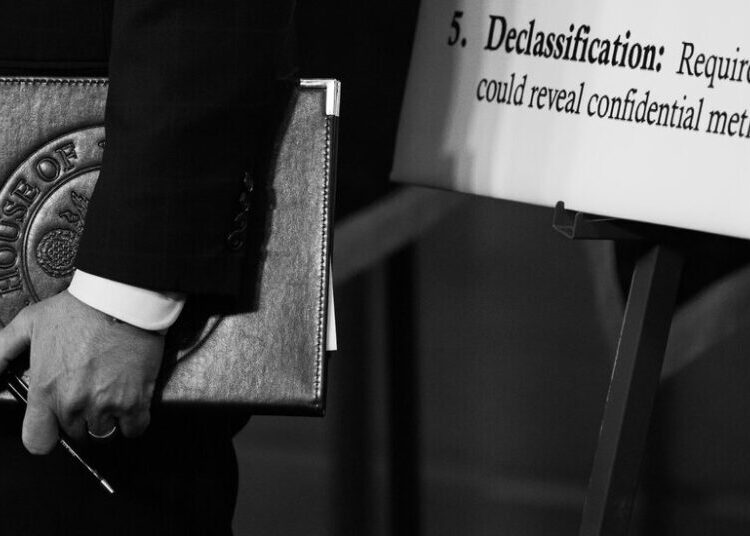The A.I. company Anthropic recently opened a pop-up in the West Village it designated a “Zero Slop Zone.” On offer for visitors were baseball caps with the word “thinking” on them, coffee and hard copies of a nearly 15,000-word essay by the company’s chief executive, with the title “Machines of Loving Grace.” Use of phones and laptops was discouraged, although to get in you were asked to show you had downloaded Claude, Anthropic’s large language model. Instead, humans were meant to hang out with other humans.
Anthropic’s marketing stunt is the most obvious example yet of A.I. companies’ recent “anti-A.I. A.I. strategy,” as I call it — an apparent bid to reckon with the public’s negative view of the technology. Only 17 percent of American adults think A.I.’s impact on the country will be positive in the next two decades, according to a Pew Research Center survey this spring. Less than a quarter think A.I. will benefit them personally. A.I. companies seem to have tacitly acknowledged this skepticism and are changing how they present themselves. Some of the most consumer-facing ones are marketing their flagship products as creativity triggers that are fundamentally human and appreciative of the analog — even as these attributes stand in stark opposition to what A.I. is and does.
A.I. is far from human. “What is A.I.,” as the poet Christian Wiman asks, “but the culmination of the notion that the brain is a machine?” Yet the attempt to reframe A.I. agents like Claude and OpenAI’s ChatGPT as about connection and authenticity may well determine whether some of the biggest A.I. companies can continue making major inroads with wary consumers. If this tactic works, it may indicate that the public — or at least many of the 52 percent of Americans who actively use A.I. large language models — are susceptible to double-think. How, after all, can a machine be human? How can the digital be analog? How can a device-free space represent an A.I. company?
Anthropic brands Claude as a “thinking partner” — a complement to creativity rather than a replacement for it. OpenAI has made a similar pivot. Its ads no longer argue that ChatGPT is primarily a cutting-edge, historically significant technology but rather an aid to a quiet, analog aesthetic that seemingly has little to do with A.I. Smaller A.I. firms have followed suit, building products around its supposedly human possibilities.
OpenAI shot its latest TV ads on warm, 35-millimeter film. In one 30-second spot, set on a road trip, siblings smile and banter amid an idyllic American landscape. About halfway through, an A.I. prompt appears onscreen: “Help me plan a trip with my sister over break.” As the pair drive off, what is presumably ChatGPT’s answer begins to scroll down the screen: “Got it — a Blue Ridge Mountains road trip is the ultimate combo of breathtaking views, spontaneous adventures and great eats.” A Neil Diamond song plays. The scroll concludes, “Do you want me to draft a playlist for when you hit the road?”
The commercials don’t show anyone bent over a phone or a laptop or even engaging with ChatGPT. It’s unusual for companies to advertise a product without ever showing the item they’re trying to sell. There are some exceptions, but cars, phones, hotels, alcohol, candy, clothing, appliances — almost all those products are in the ads designed to sell them. Even in more conceptual ads meant to evoke an emotion or experience, we still see the product somewhere: A singer with a bottle of Coke, a father facilitating a “priceless” experience by tapping a Mastercard, an athlete playing in Nike sneakers.
By not actually showing anyone on a digital device or using ChatGPT, the implication is that engaging with A.I. is not only effortless but fundamental to the texture of human experience. It’s not separate from living; it’s part of living. These new advertisements are selling A.I., but they’re pointing to emotional experiences that have little to do with it. The same is true with Anthropic’s “Zero Slop Zone.” Reading a hard-copy essay, writing in a journal and conversing over coffee aren’t related to A.I., either.
There’s also an implicit admission of embarrassment about using A.I. In OpenAI’s TV spot, the brother might not want his sister seeing him poking questions into ChatGPT. In the company’s date night commercial, the young man probably hopes his date doesn’t find out he used A.I. to come up with the recipe for his home-cooked meal. The product’s invisibility signals there’s a shamefulness about A.I., of which these ads seem to be acutely aware.
That’s the new sales pitch: Like it or not, trust it or not, want to be seen using it or not, A.I. is and will continue to be a part of society’s very fabric.
It’s a strategy that has key similarities to Apple’s greatest commercials. Though its underlying computing technology may not have been considered hip in its time, Apple successfully positioned its brand as the cooler option to its central competitor, Microsoft, which Apple depicted as a frumpy character representing “PC” in its “Get a Mac” (or “Mac vs. PC”) ad series. The unique challenge for A.I. companies is that there doesn’t yet seem to be a competitor who they can “outcool”; the Microsoft in this equation remains their own technology. How do you sell to a public that holds negative views of your product? How do you separate the perception of your brand from the perception of what you’re selling?
One solution is to embrace double-think. Become a business that steals from creative professionals while advertising to them. Promote the communal power of a device-free space while trying to saturate the world with your atomizing technology. It’s a strategy that could work; after all, some of the most successful ad campaigns of all time have tied emotions to products that have absolutely nothing to do with each other. (What does the sugar water of Coca-Cola have to do with world peace? What do the diamonds of De Beers have to do with love?)
If the skepticism surrounding A.I. continues, more and more A.I. companies will likely shift to this approach of manufactured authenticity. It’s a decent bet the trick will work. But a core irony exists: Anthropic staffed its pop-up with hard-working, smiling humans who handed out goodies, fetched coffee and hats. OpenAI says it didn’t use A.I. in any of its well-shot commercials. Had they used A.I., none of it would have seemed quite so human.
Mr. Delistraty is the author of “The Grief Cure: Looking for the End of Loss” and is working on a book about a group of Spiritualists.
The Times is committed to publishing a diversity of letters to the editor. We’d like to hear what you think about this or any of our articles. Here are some tips. And here’s our email: [email protected].
Follow the New York Times Opinion section on Facebook, Instagram, TikTok, Bluesky, WhatsApp and Threads.
The post A.I.’s Anti-A.I. Marketing Strategy appeared first on New York Times.




